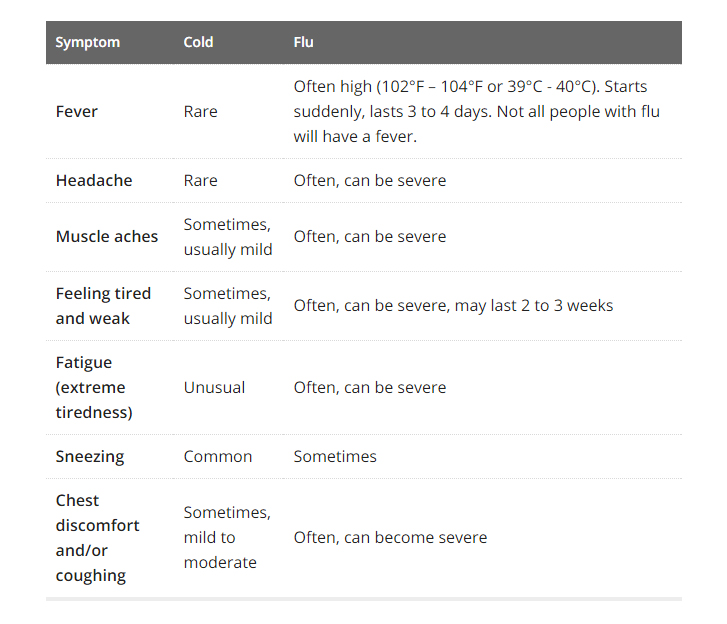
FLU SYMPTOMS:
Symptoms typically start 1-4 days after exposure. In healthy adults it usually lasts 2-10 days, and may last longer for children and the elderly, and for people with underlying health issues. Here are common flu symptoms:
- fever
- chills
- cough
- runny eyes
- stuffy nose
- sore throat
- headache
- muscle aches
- extreme weakness and tiredness
- vomiting and diarrhea sometimes occur, but are more common in children than adults
FLU OR COLD?
There are a lot of misconceptions about what the flu is, and the term is often applied to gastro illnesses. However, the flu is primarily a respiratory illness and the symptoms can be very similar to what you experience with a cold, though it can be much more serious. Here’s a quick comparison of the two, taken from the Government of Ontario’s fact page:

TREATMENT:
If you get the flu, here are steps you should take:
- stay home to avoid spreading it to others in the community
- get plenty of rest to allow your body to recover
- drink plenty of fluids
- avoid caffeine (it’s dehydrating)
- treat pain and fevers with relievers such as acetaminophen or ibuprofen – do not give acetylsalicylic acid (Aspirin) to anyone under 18
- treat muscle pain with hot baths and heating pads
- gargle with salt water or use lozenges for sore throat
- try saline spray for nasal congestion
- avoid alcohol and tobacco
See a doctor if your symptoms get worse, or if you’re in a higher risk group.
HIGH-RISK GROUPS:
- babies and children under 5
- adults over 65
- pregnant women
- people with underlying health issues
- Indigenous peoples
*The information from this page is taken from the Government of Ontario’s site. If you have further questions, please speak with your doctor. Links to other government fact pages can be found on the resources page.